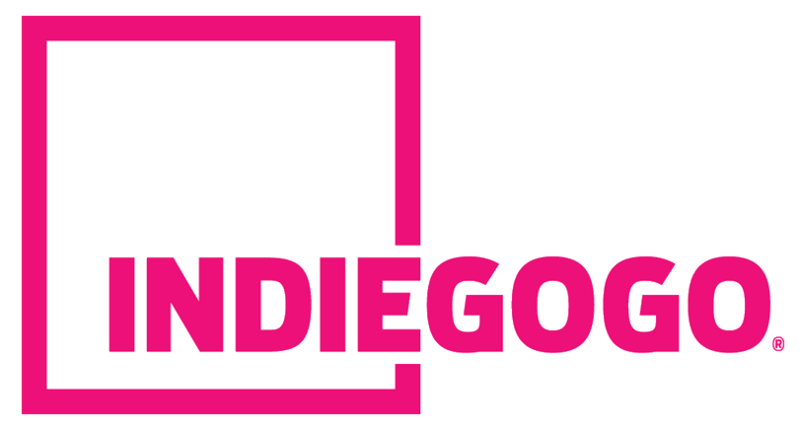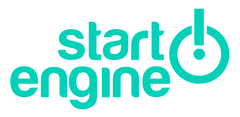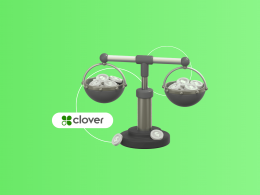Imagine having a brilliant business idea, like a new cafe with a twist or an innovative tech gadget. However, there’s a hurdle – funding. When you’re a small business, getting traditional funding can be tough. This is where crowdfunding offers hope. It lets you raise money, not from one big investor, but from a lot of people, typically via the internet. You present your idea on a platform, and if people like it, they can contribute financially to help make it a reality.
Think this might be the answer you were looking for? Read on as we explore the various types of crowdfunding and different platforms in detail. We’ll cover insights and strategies that can help aspiring entrepreneurs breathe life into their dream projects.
Contents:
2. Is crowdfunding good for small businesses?
3. Potential pitfalls: What should a small business watch out for when crowdfunding?
4. What are the types of crowdfunding?
- Reward-based crowdfunding
- Equity-based crowdfunding
- Debt-based crowdfunding
- Donation-based crowdfunding
5. Where to crowdfund? List of the crowdfunding portals for entrepreneurs and smaller companies
6. Kickstarter: Reward-based crowdfunding
7. Indiegogo: Reward-based crowdfunding
8. GoFundMe: Donation-based crowdfunding platform
9. StartEngine: Equity-based crowdfunding
10. Kiva: Debt-based crowdfunding platform
11. Executing a successful small business crowdfunding campaign
12. What to do in the post-campaign phase?
What is crowdfunding?
Crowdfunding is a way of raising funds by asking a large number of people (the crowd) to contribute small amounts of money towards a project, idea, or business. It primarily takes place online, where creators present their projects on crowdfunding platforms, and potential backers can support them financially. This method of funding bypasses traditional avenues like banks or venture capitalists and taps directly into the power of community and shared interest.
Nowadays, crowdfunding is a crucial tool for innovation, entrepreneurship, and social impact, reflecting a shift towards community-driven funding and a more democratized form of capital raising.
Is crowdfunding good for small businesses?
Crowdfunding can indeed be a highly effective tool for small businesses, offering several advantages that are particularly well-suited to their unique needs and challenges.
Access to capital
One of the most significant barriers for a small business is access to funding. Crowdfunding provides an alternative to traditional financing routes like bank loans or seeking out investors, which can be daunting and not always successful. Through crowdfunding, small businesses can tap into a wider pool of potential funders, ranging from individual enthusiasts to larger investors, to raise the capital they need.
Market validation
Launching a crowdfunding campaign allows a small business to gauge the market’s interest in their product or service before fully committing to production or launch. This validation is crucial as it minimizes the risk of investing in a product with no demand. By presenting the idea to the public and seeing the response, a business can better understand its potential customer base and market viability.
Building a community and customer base
Crowdfunding isn’t just about raising money; it’s also about building a community. Backers who support a campaign often become the first customers and brand advocates. They can provide valuable feedback, spread the word, and help create a buzz around the product or service. This early engagement creates a loyal customer base even before the official launch of the business.
Marketing and publicity
Running a crowdfunding campaign can also serve as a powerful marketing tool. It increases visibility for the business and can attract media attention, especially if the campaign has a unique story or innovative product. A key element in this process is the creation of a compelling business presentation, which effectively communicates the vision and potential of the project to potential backers This publicity is often far-reaching and can continue to benefit the business long after the campaign has ended.
Testing and refining business concept
Crowdfunding lets small businesses test and refine their business concept with real-world feedback. By interacting with backers, businesses can identify and address potential issues, and better align their products or services with customer needs and expectations.
Outside of crowdfunding, businesses usually need to create focus groups, do market research, or simply release a product and see the response. And it all costs money.
No equity sacrifice
In reward-based crowdfunding, unlike seeking venture capital, small business owners don’t have to give up a share of their company. This means they retain full control over their business while still getting the money they need. This aspect is particularly appealing to those who want to maintain decision-making power and ownership.
Diverse funding options
With different types of crowdfunding available (reward-based, equity-based, debt-based, and donation-based), small businesses can choose the model that best suits their needs and goals. Each type offers different advantages, whether it’s maintaining equity, engaging customers, or accessing loan-like funding without the traditional hurdles.
Key takeaway for small businesses
Crowdfunding presents small businesses with accessible means of raising capital. But it’s not all about money. Testing the market, building a customer base, and gaining visibility are all great tools for launching a successful business that you can use while you crowdfund.
Once you have your funding secured, let Synder streamline your financial management. Effortlessly manage your books, track your spending, and keep your finances organized as your business grows. Don’t let accounting be a hurdle in your success story.
Potential pitfalls: What should a small business watch out for when crowdfunding?
When something seems too good to be true, it’s vital to carefully look at the potential pitfalls, as there must be some. Here, we’re providing you with a list of things to watch out for.
Setting realistic goals
One of the first pitfalls in crowdfunding is setting unrealistic funding goals. If the goal is too high, it might not be reached, and depending on the platform’s policy (especially those with an all-or-nothing approach), you might end up with no/funds/capital to fall back on. If it’s too low, the money might run out before you can even put the product on the market.
Create a budget that will help you set a realistic target. It should reflect the actual needs of the project, keeping in mind the costs of rewards and platform fees.
Intellectual property (IP) protection
Revealing your idea or product on a public platform before securing intellectual property rights can be risky. It’s essential to have your IP rights (like patents, trademarks, or copyrights) sorted out to prevent others from copying your idea.
Understanding platform policies
Different crowdfunding platforms have different rules and fees. Some operate on an all-or-nothing funding model, while others allow you to keep whatever you raise. Additionally, platforms charge various fees that can eat into the funds raised. Keep in mind these nuances before choosing a platform.
Overpromising
In the excitement of launching a crowdfunding campaign, there’s a temptation to make grand promises about what your product or service can do. Overpromising can lead to underdelivering, which damages credibility and customer trust. Ensure that what you promise is achievable and realistic.
Reward fulfillment
If your campaign offers rewards to backers, make sure you can deliver on these promises. Underestimating the cost and effort of reward fulfillment can lead to delays, additional expenses, and unhappy backers. Plan your rewards carefully, considering production, shipping, and handling costs.
Legal and financial compliance
Especially for equity-based crowdfunding, be aware of legal and financial regulations. Non-compliance can lead to serious legal troubles. Understand the tax implications, securities laws, and investor rights associated with your crowdfunding model.
Marketing and promotion
A successful crowdfunding campaign requires effective marketing, but over-relying on the platform to attract backers can be a mistake. Active promotion through social media, email marketing, and other channels is necessary to drive traffic to your campaign.
Post-campaign planning
The end of a crowdfunding campaign isn’t the end of the journey. Have a clear plan for what happens next, including production, distribution, and follow-up with backers. Use the post-campaign momentum to your advantage.
Dealing with failure
Not every crowdfunding campaign is successful. It’s important to have a contingency plan if the campaign doesn’t meet its goals. How will you proceed with your project? Can you seek alternative funding? How will you communicate this to your backers?
Also, dealing with failure is hard both on the financial front and the emotional one. So surround yourself with people who can be your support circle when things don’t go as planned. Having family and friends who are there for you as the road gets rough helps you weather the storm.
Key takeaways for small businesses
It’s not all roses in the world of crowdfunding, so a balanced approach of optimism and caution is necessary. Most of the above points come down to thorough planning and research. And once you have a good foundation laid out, the campaign process will be much smoother and hopefully end in the much-needed funding.
But please remember that it also takes some luck to make it. So don’t berate yourself if, despite your best efforts, your campaign didn’t reach the target – some elements are simply beyond our control. Just believe in yourself!
What are the types of crowdfunding?
Now that we’ve covered the good, the bad, and the ugly of crowdfunding, we can explore it with a more grounded understanding of its advantages and challenges. We’ll continue this journey by teasing out the different types of crowdfunding.
1. Reward-based crowdfunding
In reward-based crowdfunding, backers contribute funds to a project and receive a non-monetary reward in return, often related to the project itself. The rewards vary based on the contribution amount and can range from simple thank-you notes to early access to the product, or unique experiences. For instance, a new board game project might offer a copy of the game at lower contribution levels, and a chance to have the backer’s likeness drawn into the game at higher levels.
Popular platforms that use this model: Kickstarter, Indiegogo
2. Equity-based crowdfunding
Here, investors receive a stake in the company, usually in the form of equity shares. This type is more like traditional investing. Backers become part-owners of the company and potentially benefit from its success. It’s regulated more strictly, given its nature of offering securities.
Popular platforms that use this model: StartEngine, Crowdcube
Want to explore equity financing further? Read our article about equity financing basics.
3. Debt-based crowdfunding
Backers lend money to a business and are repaid over time with interest. It’s effectively a peer-to-peer loan arrangement, different from traditional crowdfunding where backers don’t expect financial repayment. The interest rates can vary. This method can be quicker and more flexible than bank loans.
Popular platforms that use this model: LendingClub, Prosper
4. Donation-based crowdfunding
People donate to causes, projects, or organizations without expecting anything in return. This type is common for charitable projects, personal fundraising, and social or community causes. It’s driven by the backers’ desire to support causes they care about.
Popular platforms that use this model: GoFundMe, JustGiving

Where to crowdfund? List of the crowdfunding portals for entrepreneurs and smaller companies
There are many, many platforms that offer small business crowdfunding. So here’s a non-exhaustive list of popular crowdfunding portals that small businesses can consider for raising capital:
- Kickstarter: Primarily for creative projects, Kickstarter is a great platform for businesses looking to raise funds through a reward-based system.
- Indiegogo: Offering flexibility in funding (fixed and flexible goals), Indiegogo is suitable for a wide range of business types, including startups and innovation projects.
- GoFundMe: Known for personal and charitable causes, GoFundMe can also be used by small businesses, particularly for community-driven projects.
- StartEngine + SeedInvest: This platform focuses on equity crowdfunding, allowing small businesses to raise capital by selling equity to accredited and non-accredited investors.
- Crowdcube: A UK-based equity crowdfunding platform, Crowdcube is ideal for startups and growing businesses looking to raise funds in exchange for equity.
- Kiva: Specializes in microloans and is particularly useful for small businesses in need of smaller amounts of capital, often in underserved markets.
- Fundable: This platform offers both reward-based and equity crowdfunding options, catering specifically to small businesses and startups.
- CircleUp: Known for its focus on early-stage consumer brands, CircleUp provides equity crowdfunding for businesses in this niche market.
- WeFunder: This portal supports a variety of small businesses and startups through equity crowdfunding, allowing companies to raise funds from accredited and non-accredited investors.
- Patreon: Ideal for creators and creative businesses, Patreon operates on a subscription model where customers support businesses in exchange for exclusive content or experiences.
- LendingClub: This is a peer-to-peer lending platform where small businesses can obtain loans funded by individual investors.
- Prosper: Similar to LendingClub, Prosper offers peer-to-peer loans, which can be a good option for small businesses seeking alternative financing solutions.
Now, we will look closer at different types of crowdfunding portals to help you make more informed choices.
Kickstarter: Reward-based crowdfunding (fixed funding approach)

Kickstarter stands as one of the most popular platforms in the reward-based crowdfunding arena. It caters primarily to creative and innovative projects, ranging from independent films and music albums to cutting-edge technology gadgets and unique board games.
Here’s what you should know about Kickstarter:
- All-or-nothing funding model: One of Kickstarter’s defining features is its all-or-nothing (fixed) approach. This means that project creators set a funding goal and must reach this target within a specified timeframe to receive the funds. If the goal isn’t met, no money changes hands, and backers aren’t charged.
- Reward-based system: Kickstarter operates on a rewards-based system. Creators offer backers tangible rewards or experiences in exchange for their financial support. These rewards often vary depending on the level of pledge and can range from early access to products, exclusive content, or personalized experiences.
- Community engagement: Kickstarter emphasizes community and storytelling. Creators use the platform to share their vision and engage with their audience. Backers can follow projects, get updates, and interact with project creators.
- Project vetting and approval process: Before going live, projects undergo a review process to ensure they meet Kickstarter’s guidelines and terms of service. This process maintains a level of quality and trustworthiness on the platform.
- Backer protection: Kickstarter has policies in place to protect backers, including transparency requirements for project creators and accountability standards in case of unfulfilled rewards.
- Fee structure: If your project reaches its funding goal on Kickstarter, they will take a 5% fee from the total amount you raised. Additionally, there’ll be payment processing fees, which can range from 3% to 5%. If your project doesn’t meet its funding goal, you won’t have to pay any fees.
Indiegogo: Reward-based crowdfunding (flexible approach)

Indiegogo stands out with its flexible funding option, where creators can keep the funds they raise, even if they don’t meet their goals. This flexibility is appealing for projects where any amount of funding can make a difference.
Here are some key features that define Indiegogo:
- Flexible funding options: Indiegogo offers two primary types of funding models: Fixed Funding (all-or-nothing) and Flexible Funding. Fixed Funding is similar to Kickstarter’s model where funds are only collected if the project meets its goal. Flexible Funding allows creators to keep the funds they raise, regardless of whether they reach their target or not.
- InDemand Program: One unique feature of Indiegogo is its InDemand program, which allows creators to continue raising funds even after their initial campaign ends. This is particularly useful for projects that have met their goals and wish to keep the momentum going.
- Backer engagement: Similar to other crowdfunding platforms, Indiegogo provides tools for creators to engage with their backers. Creators can update their backers on progress, respond to comments, and build a community around their project.
- Marketplace: Indiegogo also features a marketplace where successfully funded products can be sold. This is an excellent platform for creators to transition into the ecommerce phase after their crowdfunding campaign.
- Backer assurance: Indiegogo has introduced policies like the Indiegogo Guarantee, which aims to increase backer confidence by ensuring transparency and communication from creators.
- Pre-launch feature: Indiegogo provides a pre-launch feature that allows creators to build hype and gather a following before their campaign officially starts. This can be a powerful tool for ensuring a strong campaign launch.
- Fee structure: Indiegogo takes a 5% fee from the total amount you raise in your campaign. This fee is based on the actual funds raised, not your set goal. Additionally, their payment processor charges a varying fee, depending on your location and currency.
GoFundMe: Donation-based crowdfunding platform

GoFundMe has become almost a household name in the realm of personal and charitable fundraising. It stands out in the crowdfunding world for its focus on donation-based campaigns. Whether it’s raising funds for medical expenses, educational goals, community projects, or emergency relief efforts, GoFundMe provides a place where stories of need and compassion meet generosity.
Here’s what you need to know about GoFundMe:
- Donation-based model: GoFundMe operates on a donation model, where people contribute money without expecting any financial return or reward. This model is particularly suited for charitable causes, personal fundraising, and community projects.
- Flexible withdrawals: Campaign organizers can withdraw funds as they come in, without having to wait until the campaign ends. This feature is particularly useful for urgent fundraising needs.
- No funding goal requirement: Unlike some other crowdfunding platforms, GoFundMe doesn’t require you to set a funding goal. Campaigns can raise as much money as they can, regardless of a specific target.
- GoFundMe Guarantee: The platform offers a guarantee program that aims to protect donors and beneficiaries, ensuring that funds go to the right place and donors are protected against fraud.
- No platform fee for organizers: GoFundMe doesn’t charge a platform fee to the campaign organizer. However, there are standard transaction fees for processing payments.
- Strong community focus: The platform emphasizes personal stories and community support, making it a popular choice for causes that resonate on a personal level with donors.
StartEngine: Equity-based crowdfunding

StartEngine which recently joined forces with SeedInvest is a prominent equity crowdfunding platform that offers unique opportunities for both entrepreneurs and investors. It enables individuals to invest in startups and early-stage companies, splitting the financial burden.
Here are some of its key features:
- Equity crowdfunding: StartEngine allows businesses to raise capital by offering equity to a broad audience of investors. This means investors can buy shares in early-stage companies, potentially benefiting from the company’s growth.
- Accredited and non-accredited investors: Unlike traditional investment avenues, which are often limited to accredited investors, StartEngine is accessible to both accredited and non-accredited investors. This inclusivity broadens the pool of potential investors for businesses. Also, The platform typically has low minimum investment thresholds, making it accessible for a wide array of investors to participate in equity crowdfunding.
- Secondary market: StartEngine Secondary, their alternative trading system (ATS), allows investors to trade shares of companies that have previously raised money through equity crowdfunding on StartEngine. This feature provides liquidity to investors.
- Regulatory compliance: StartEngine operates in compliance with SEC regulations, particularly Regulation Crowdfunding (Reg CF) and Regulation A+, ensuring a secure and regulated investment environment.
- Entrepreneur and investor support: The platform provides various resources and support to entrepreneurs, including assistance with campaign creation, marketing, and navigating regulatory requirements. StartEngine offers educational resources to help investors understand the risks and benefits of investing in startups and early-stage companies.
- Direct community engagement: Businesses can directly engage with their investor community through the platform, building a base of supporters and brand ambassadors.
- Flexible funding goals: StartEngine allows for both fixed and flexible funding goals, giving businesses the option to choose the model that best suits their fundraising strategy.
- Fee structure: There’s a varied fee structure for issuers (i.e. the company) and there are no fees for investors (unless arranged otherwise).
Kiva: Debt-based crowdfunding platform

Kiva is a unique platform in the crowdfunding space, focusing on microloans to support small businesses and individuals around the world. It primarily serves entrepreneurs in less developed countries, offering them a platform to access financial resources that might otherwise be out of reach. Kiva’s mission is rooted in empowering individuals through lending, helping to alleviate poverty, and foster business growth in underserved communities.
What you need to know about Kiva:
- Microloan focus: Kiva specializes in providing microloans, typically small amounts of money, which are vital for entrepreneurs and individuals in underserved communities who may not have access to traditional banking services.
- Zero-interest loans: Unlike conventional loans, Kiva’s loans don’t charge any interest. This feature is crucial for borrowers in developing regions, making financial assistance more accessible and affordable.
- Global reach: Kiva operates internationally, providing loans to people in over 80 countries. This wide reach helps address various needs, from business development to educational expenses, in different parts of the world.
- Crowdfunded by individuals: Loans on Kiva are crowdfunded by individual lenders from around the world. Lenders can browse through different borrowers’ profiles and choose whom they want to lend to, often with as little as $25.
- Social impact focus: Kiva’s mission is centered on alleviating poverty and empowering individuals through lending. The platform is especially supportive of projects that have a positive social impact, including women-owned businesses, sustainable agriculture, and education initiatives.
- Direct lending to borrowers: Kiva allows lenders to directly lend to the borrower they choose, fostering a more personal connection between lenders and borrowers. This direct lending model also increases transparency.
- Repayment model: Borrowers repay the loan over time, and once repaid, lenders can choose to withdraw their money or re-lend it to another borrower, continuing the cycle of support.
- Volunteer program: Kiva has a strong volunteer program, where volunteers work to review, translate, and edit borrowers’ stories, enhancing the platform’s reach and impact.
Executing a successful small business crowdfunding campaign
Each platform has its own best practices, but there are also some general guidelines that can help entrepreneurs execute a successful crowdfunding campaign.
Building a strong marketing strategy
For a strong marketing strategy, you need to develop a clear and compelling brand message while your project should have a distinct identity that resonates with your target audience. So use consistent visuals and language across all your marketing materials to establish brand recognition.
Your crowdfunding campaign should speak to the hearts of your potential backers. At this stage, fundraising is less about how much money you need and more about the story behind your project.
Utilizing social media and digital marketing
Leverage social media platforms to build hype and engage with potential backers. Platforms like Instagram, Facebook, Twitter, and LinkedIn can be powerful tools to spread the word.
Share behind-the-scenes content, teasers, and updates to keep your audience engaged and excited.
Create compelling content that tells your story and highlights the value of your project. Blog posts, videos, infographics, and podcasts can be effective ways to reach a broader audience.
Optimize your content for search engines (SEO) to increase your online visibility.
Build an email list to communicate directly with potential backers. Use newsletters to keep your audience informed about your campaign progress and milestones.
While online platforms are crucial, don’t overlook the potential of local events, community gatherings, and traditional media.
Engaging with backers and building a community
Your backers are everything when you crowdfund. They not only choose your project but give you valuable feedback about various aspects of your product or service. So foster a sense of community among your backers. Engage with them through comments, forums, or live Q&A sessions and show appreciation for their support. Personalized messages, shoutouts, or thank-you notes can make backers feel valued.
Updates and communication during the campaign
This builds on the previous point – keep your backers and potential supporters updated regularly. Use these updates to show progress, announce milestones reached, or introduce new rewards. Share both successes and challenges and be honest about your project’s status and any obstacles you face. Backers appreciate transparency and are often willing to support you through challenges.
And remember, keep the communication channels open even after the campaign. Long-term relationships can lead to future support and advocacy.
Handling challenges and setbacks
Being prepared can help you navigate challenges more effectively, so anticipate potential problems and have contingency plans ready. Address problems quickly and communicate any changes or solutions to your backers.
Don’t hesitate to seek advice from experienced crowdfunders, mentors, or your network.
Also, consider reaching out to your community for support and ideas – often, they can provide innovative solutions and perspectives.
What to do in the post-campaign phase?
The post-campaign phase of crowdfunding is as critical as the campaign itself. Successfully navigating this stage can set the foundation for the long-term success and sustainability of your project or business.
Fulfilling promises and rewards
After a successful crowdfunding campaign, it’s crucial to fulfill the commitments made to backers. This involves delivering on any rewards or incentives promised during the campaign. Whether it’s a physical product, a digital download, or a personal experience, giving these rewards on time and as described is essential.
It’s not just about meeting obligations; it’s about building trust and credibility. In cases where delays or changes are inevitable, clear and honest communication is key. Keep your backers informed about the progress and any challenges you face in fulfilling rewards.
Managing funds and budget post-campaign
Once you receive the funding, you need to manage it adequately. Here are a few points to help you achieve that:
- Budget allocation: Allocate the raised funds judiciously, adhering closely to the budget outlined in your campaign. Prioritize essential costs and plan for unforeseen expenses.
- Financial planning: Develop a detailed financial plan for how the funds will be used. This includes costs related to production, reward fulfillment, shipping, and any other operational expenses.
- Record keeping: Maintain thorough records of all expenditures. This is not only good practice for any business but also necessary for transparency with your backers and for potential tax obligations.
Building upon the campaign’s success
The end of a crowdfunding campaign is just the beginning of a larger journey. Building upon the momentum and success of the campaign is what you need to do at that stage. So use the exposure and customer base you’ve gained to further grow your project or business. This might include scaling up production, expanding your product line, or exploring new markets.
Legal and financial considerations for equity and debt crowdfunding
Equity and debt crowdfunding come with specific legal and financial considerations:
- Regulatory compliance: For equity-based crowdfunding, it’s important to comply with securities regulations. This might involve filing certain disclosures, adhering to investor caps, and other legal requirements.
- Debt repayment: If you’ve raised funds through a debt-based model, have a clear plan for repayment. This includes understanding the interest rates, repayment schedules, and any penalties for late payments.
- Transparency and reporting: Regular financial reporting and transparency are crucial, especially for equity crowdfunding. Investors will expect updates on financial performance, growth metrics, and strategic decisions.
Small business crowdfunding: Conclusion
Crowdfunding offers a unique and valuable opportunity for small businesses to raise funds, validate their market, and build a supportive community. Whether it’s through reward-based platforms, equity crowdfunding, or debt-based options, there’s a crowdfunding solution to suit your business’ various needs and goals.
While it presents great opportunities, it’s important to approach crowdfunding with a well-thought-out plan, realistic goals, and a strong marketing strategy. With the right preparation and mindset, crowdfunding can be an effective tool to bring your business dreams to life and set the stage for future success.






